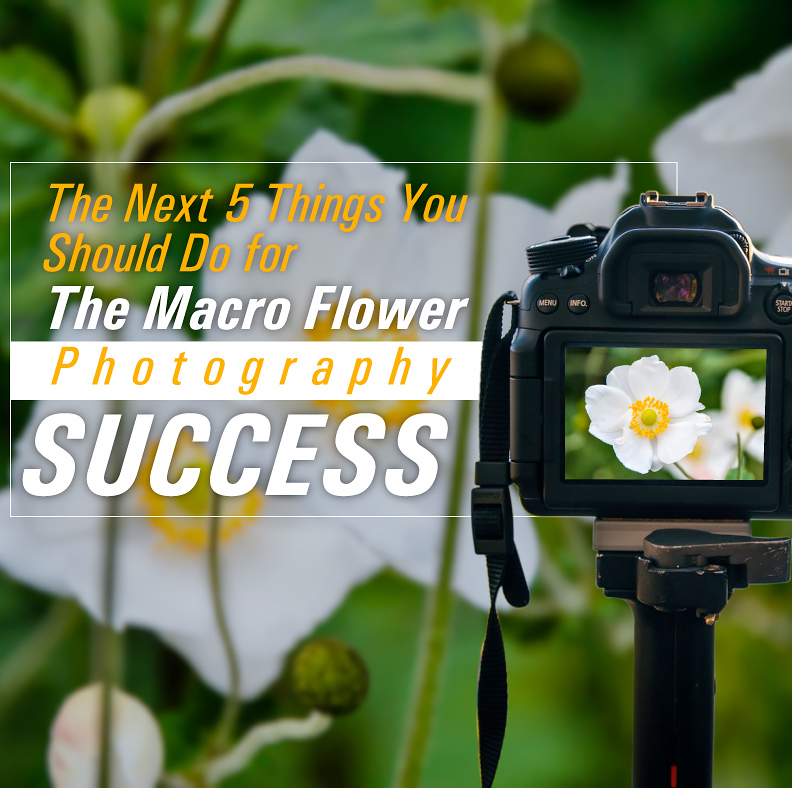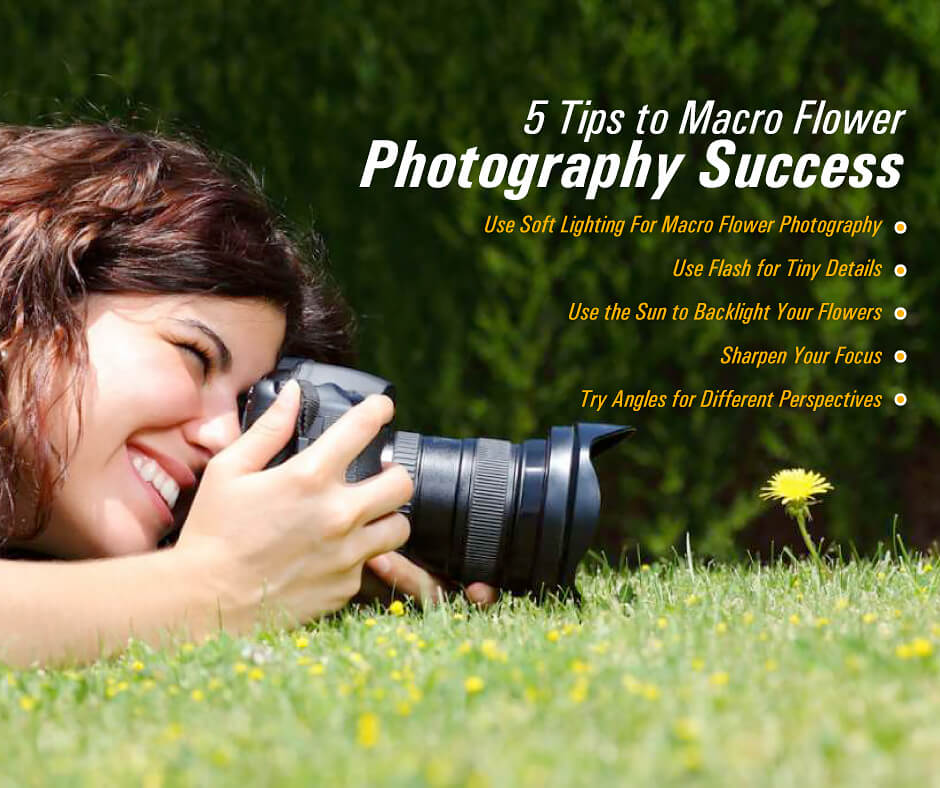Whether you are a texture photographer or not, flower photography makes for a great macro subject. Many experts and pros utilize flowers as the focus of their products because of their diversity and overall texture.
This is the reason why texture photography largely dabbles with flowers and plants.
If you are aiming to expand your skills and knowledge in this aspect, you may want to learn how to capture them in the right way. This is very helpful, especially if you are exploring texture photography, and want to extend your portfolio's reach for better-looking output.
5 Tips to Macro Flower Photography Success
Here are the five tips for a successful macro flower photography task. You may even consider these as effective travel photography tips, considering that travels offer tons of flowers and other texture-rich subjects.
Use Soft Lighting For Macro Flower Photography
When using flowers as the subject of your macro photography in the niche of texture, you may want to avoid direct sunlight. Every expert and pro knows that this is the worst kind of light to utilize in this niche.
The reason being is that direct sunlight is harsh, and it creates washed-out colors as well as strong shadows. With these factors, they chop up the lines of the petals of any subjected flower.
Accordingly, it is best to utilize soft lighting when capturing images of flowers. This type of light helps preserve the natural color, as well as texture, of the petals, allowing the photographer to capture the real beauty and essence of the flower. You may want to schedule the task during overcast days, as well, because the lighting is soft and even.
Use Flash for Tiny Details
When aiming to get all of the tiny details possible, a macro lens with a 1:1 ratio is a powerful tool, particularly for close-up shots. But, apart from this type of lens, an external flash may also get the job done, and as effective.
Experts and pros recommend reducing the flash output to -1.75 in TTL mode. This will already illuminate all the details, no matter how fine or tiny they are. You may also reduce more the flash intensity when you need less light.
At times when you want more depth of field, as you intend to keep the whole shot sharp in the end product, this may be quite problematic. However, you can still manage to do the task even with a flash.
Instead of utilizing a shallow depth of field, reduce the flash intensity to expose the macro subject. Position yourself between six to 12 inches from the flower.
Use the Sun to Backlight Your Flowers
Another great technique when taking shots of flowers is to use the backlight. As it happens, backlighting, when utilized correctly, creates an image that will help the flowers appear as if they are glowing.
To do this properly, you may want to stand with the sun directly in front of you, and shining on the subjected flower from behind. This is the best angle to get the correct and proper backlighting.
Moreover, there are certain angles that the leaves become see-through or translucent. You need to experiment with which angles the sun will shine on the leaves to create this image. But, the best time of the day is usually during the late afternoon, before the sun sets.
Sharpen Your Focus
Your photos will need to be as sharp as possible, especially if you want to have an end product that features all sorts of details of the subject. Keep in mind that you will not get the maximum texture appearance, which is highly essential in the texture and macro photography niche, when you take the subject with a blurry image. The reason being is that the details will not show well in this type of process.
So, to get the sharp focus that you need, take your shots while your camera is stationary. You may want to use a much slower shutter speed, as well, during the shoot. It is worth noting that even the slightest movements, like your hand pressing the shutter, can impact the image and may cause distortion.
Try Angles for Different Perspectives
Every great photographer knows that angles and perspectives matter. No matter what, who, or where the subject is, having different angles to take the shots is important.
If you are still learning, one great tip is to not just stand in front of a beautiful flower and take the shot. Instead, try to take shots from various angles to give you different perspectives of the subjected flower.
You may even climb a tree or lay down on the ground to shoot the subject. You must experiment with all the possible angles, as well as flower photography techniques, to capture various textures and sharpness.
The Bottom Line
All in all, learning to take quality shots of flowers can be quite challenging for some. But, with the right tools, techniques, and tips, you can easily find your way to get the best shots of flowers. Moreover, it will always take a lot of practice and experimentation, so, after reading this, apply these things immediately and work your way from there.
Author Bio:
Dhaval has two passions: Travel and photography. Lucky for him they go hand in hand. At
dhavalilama.com you can experience how nature and photography got him inclined to inspire and encourage other and follow the identical path. Through his meticulous experience he will coach you on various hacks to photograph Nature. Brace yourself for the world of photography!
@dhavalilama


